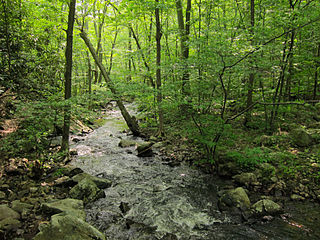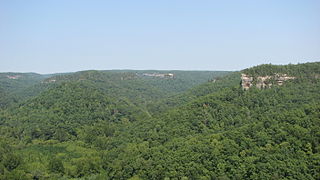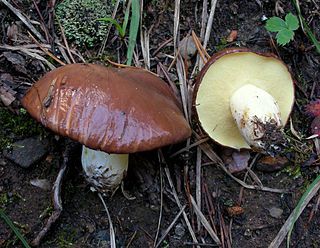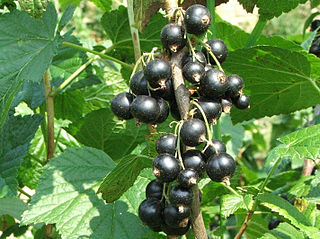Related Research Articles

Rusts are plant diseases caused by pathogenic fungi of the order Pucciniales.

The American chestnut is a large deciduous tree of the beech family native to eastern North America. The American chestnut was one of the most important forest trees throughout its range and was considered the finest chestnut tree in the world.

Phytophthora is a genus of plant-damaging oomycetes, whose member species are capable of causing enormous economic losses on crops worldwide, as well as environmental damage in natural ecosystems. The cell wall of Phytophthora is made up of cellulose. The genus was first described by Heinrich Anton de Bary in 1875. Approximately 170 species have been described, although 100–500 undiscovered Phytophthora species are estimated to exist.

Pinus strobus, commonly called the eastern white pine, northern white pine, white pine, Weymouth pine (British), and soft pine is a large pine native to eastern North America. It occurs from Newfoundland, Canada west through the Great Lakes region to southeastern Manitoba and Minnesota, United States, and south along the Appalachian Mountains and upper Piedmont to northernmost Georgia and perhaps very rarely in some of the higher elevations in northeastern Alabama. It is considered rare in Indiana.

The Northeastern coastal forests are a temperate broadleaf and mixed forests ecoregion of the northeast and middle Atlantic region of the United States. The ecoregion covers an area of 34,630 sq miles (89,691 km2) encompassing the Piedmont and coastal plain of seven states, extending from coastal southwestern Maine, southeastern New Hampshire, eastern Massachusetts, and Rhode Island, southward through Connecticut, New York State, New Jersey, southeast Pennsylvania, Delaware and Maryland.

Pinus sibirica, or Siberian pine, in the family Pinaceae is a species of pine tree that occurs in Siberia from 58°E in the Ural Mountains east to 126°E in the Stanovoy Range in southern Sakha Republic, and from Igarka at 68°N in the lower Yenisei valley, south to 45°N in central Mongolia.

Cronartium ribicola is a species of rust fungus in the family Cronartiaceae that causes the disease white pine blister rust. Other names include: Rouille vésiculeuse du pin blanc pin (French), white pine Blasenrost (German), moho ampolla del pino blanco (Spanish).

The Appalachian mixed mesophytic forests is an ecoregion of the temperate broadleaf and mixed forests biome, as defined by the World Wildlife Fund. It consists of mesophytic plants west of the Appalachian Mountains in the Southeastern United States.

The Appalachian–Blue Ridge forests are an ecoregion in the Temperate broadleaf and mixed forests Biome, in the Eastern United States. The ecoregion is located in the central and southern Appalachian Mountains, including the Ridge-and-Valley Appalachians and the Blue Ridge Mountains. It covers an area of about 61,500 square miles (159,000 km2) in: northeast Alabama and Georgia, northwest South Carolina, eastern Tennessee, western North Carolina, Virginia, Maryland, and central West Virginia and Pennsylvania; and small extensions into Kentucky, New Jersey, and New York.

White Pines Forest State Park, more commonly referred to as White Pines State Park, is an Illinois state park in Ogle County, Illinois. It is located near the communities of Polo, Mount Morris and Oregon. The 385-acre (156 ha) park contains the southernmost remaining stand of native white pine trees in the state of Illinois, and that area, 43 acres (17 ha), was designated an Illinois Nature Preserve in 2001.
This is a glossary of some of the terms used in phytopathology.
The plant pathogenic fungus Leucostoma kunzei is the causal agent of Leucostoma canker, a disease of spruce trees found in the Northern Hemisphere, predominantly on Norway spruce and Colorado blue spruce. This disease is one of the most common and detrimental stem diseases of Picea species in the northeastern United States, yet it also affects other coniferous species. Rarely does it kill its host tree; however, the disease does disfigure by killing host branches and causing resin exudation from perennial lesions on branches or trunks.

Bursaphelenchus xylophilus, commonly known as pine wood nematode or pine wilt nematode (PWN), is a species of nematode that infects trees in the Pinus genus of coniferous trees and causes the disease pine wilt. While native to North America, it spread in the early 20th century to Japan and in the latter half of the century to other areas of Asia, including China, Taiwan and Korea, as well as to Europe, including Portugal and Spain.

Suillus brevipes is a species of fungus in the family Suillaceae. First described by American mycologists in the late 19th century, it is commonly known as the stubby-stalk or the short-stemmed slippery Jack. The fruit bodies (mushrooms) produced by the fungus are characterized by a chocolate to reddish-brown cap covered with a sticky layer of slime, and a short whitish stipe that has neither a partial veil nor prominent, colored glandular dots. The cap can reach a diameter of about 10 cm, while the stipe is up to 6 cm long and 2 cm thick. Like other bolete mushrooms, S. brevipes produces spores in a vertically arranged layer of spongy tubes with openings that form a layer of small yellowish pores on the underside of the cap.

Suillus collinitus is a pored mushroom of the genus Suillus in the family Suillaceae. It is an edible mushroom found in European pine forests. The mushroom has a reddish to chestnut-brown cap that reaches up to 11 cm (4.3 in) in diameter, and a yellow stem measuring up to 7 cm (2.8 in) tall by 1 to 2 cm thick. On the underside of the cap are small angular pores, initially bright yellow before turning greenish-brown with age. A characteristic feature that helps to distinguish it from similar Suillus species, such as S. granulatus, is the pinkish mycelia at the base of the stem.
Silvia N. Blumenfeld is an expert on mycology. From 1986 to 2004, she was a Professor of Mycology and Biotechnology of Filamentous Fungi at the National University of Comahue, in Río Negro, Argentina. She emigrated to Israel in 2002, where she became the curator of the Tel Aviv University fungi collection, specializing in medicinal mushrooms. She has over 50 articles, books, and patents to her name, and has received academic honours. In 1995, she was awarded the Argentine National 'José Antonio Balseiro' Prize for her work.

The Salmon River Falls is a 110-foot (34 m) waterfall on the Salmon River in Oswego County, New York in the United States. It is located approximately 15 miles inland from the river's confluence with Lake Ontario within the 112-acre (0.45 km2) Salmon River Falls Unique Area, which is managed by the New York State Department of Environmental Conservation. The falls and surrounding land are open to the public and are a popular sightseeing destination within the region.
Phytophthora hydropathica is an oomycete plant pathogen that is found in aquatic environments such as irrigation and river water. The pathogen was previously classified as P. drechsleri Dre II before being categorized as its own distinct species. P. hydropathica has been primarily found in association with ornamental plant nurseries. The pathogen has been isolated throughout the Southern United States, as well as internationally in Mexico, Italy, and Spain.

Blackcurrant production in the United States is relatively limited. The blackcurrant was introduced by English settlers at the Massachusetts Bay Colony in 1629 and was cultivated on some scale, particularly in New York. The plant acts as a host for the white pine blister rust that threatened the timber industry. In 1911, the federal government banned the cultivation, sale, and transport of blackcurrants to protect the white pine. Government programs systematically destroyed blackcurrant plants by chemical spraying.
Kenneth Frank Baker was an American phytopathologist. In his early career he held a number of positions with the United States Forest Service and United States Department of Agriculture. Following a three-year period in Hawaii researching pineapple pathogens, he accepted a position at the University of California, Los Angeles, where he remained for twenty-one years. He was elected as a fellow of the American Association for the Advancement of Science in 1950 and as a fellow of the American Phytopathological Society in 1969. Additionally, he served as the editor of the Annual Review of Phytopathology for five years.
References
- 1 2 Bailey, Martha J. American Women in Science: A Biographical Dictionary. Denver, CO: ABC-CLIO, 1994
- 1 2 3 "NALDC". naldc.nal.usda.gov.
- ↑ "Maryland House and Garden Pilgrimage". www.mhgp.org. Archived from the original on 2014-10-20.
- 1 2 "Archived copy". Archived from the original on 2010-08-09. Retrieved 2015-04-17.
{{cite web}}: CS1 maint: archived copy as title (link) - ↑ Adkins, Leonard M. 50 Hikes in Maryland: Walks, Hikes, and Backpacks from the Allegheny Plateau to the Atlantic Ocean. The Countryman Press, 2013